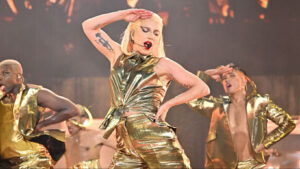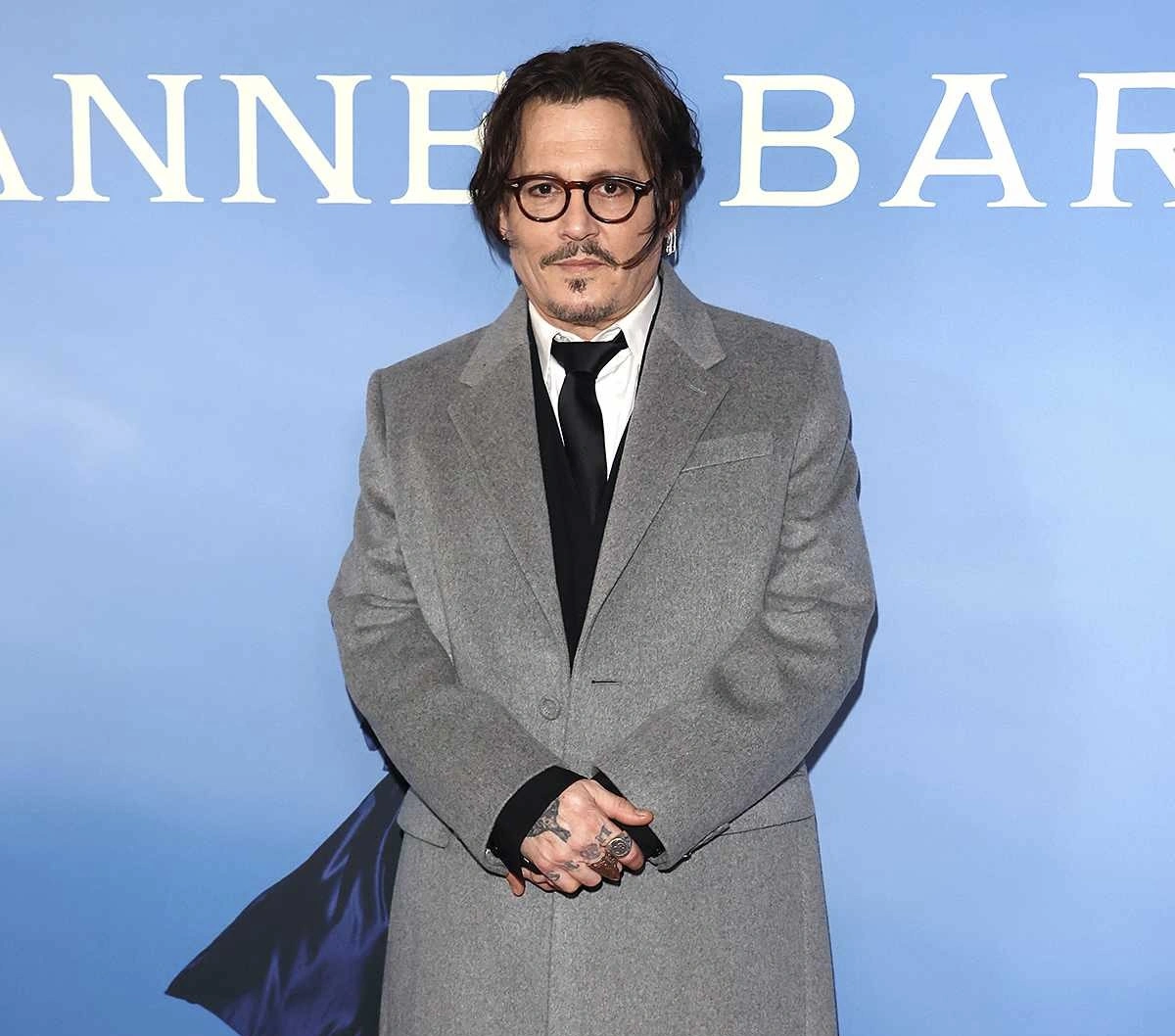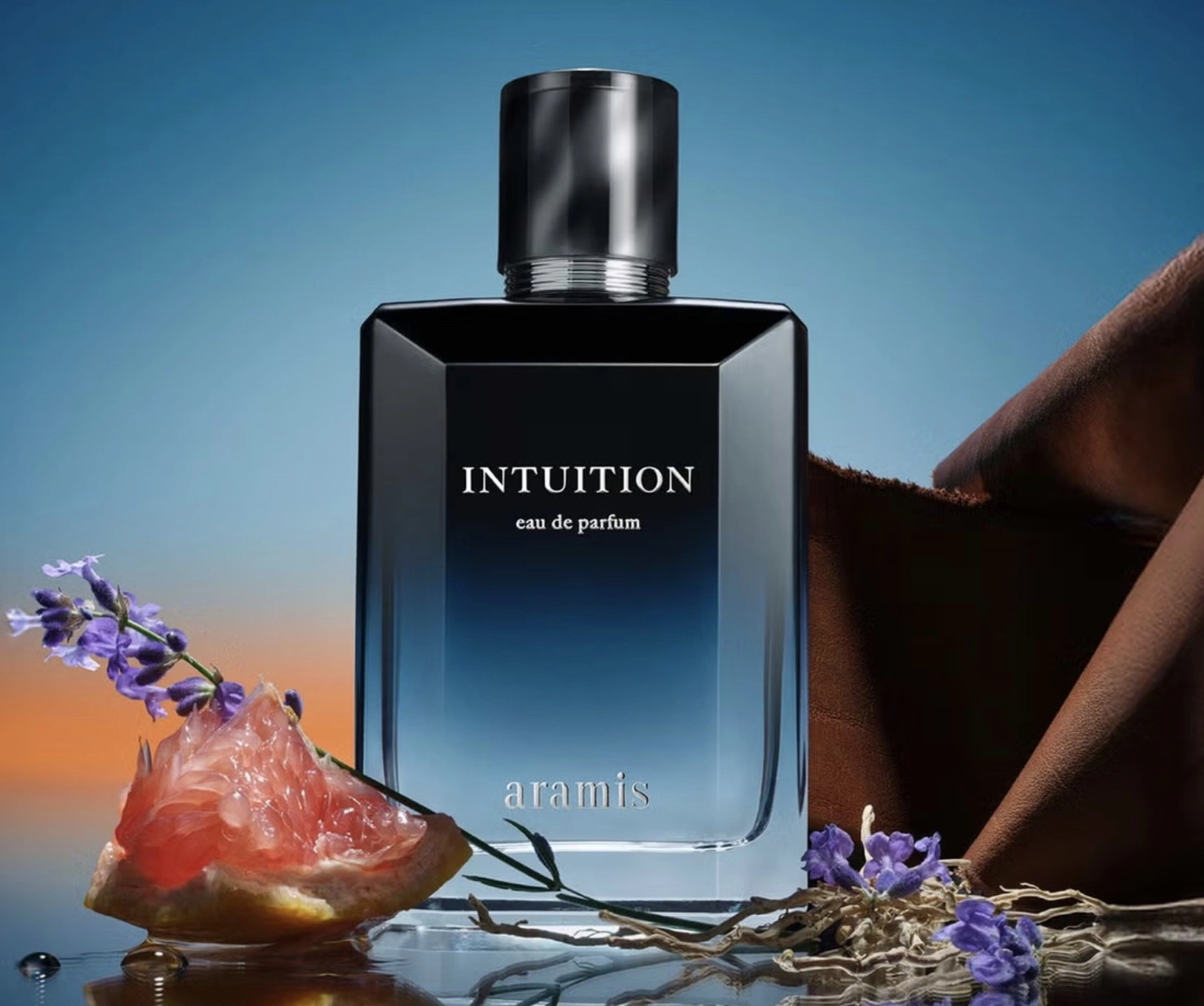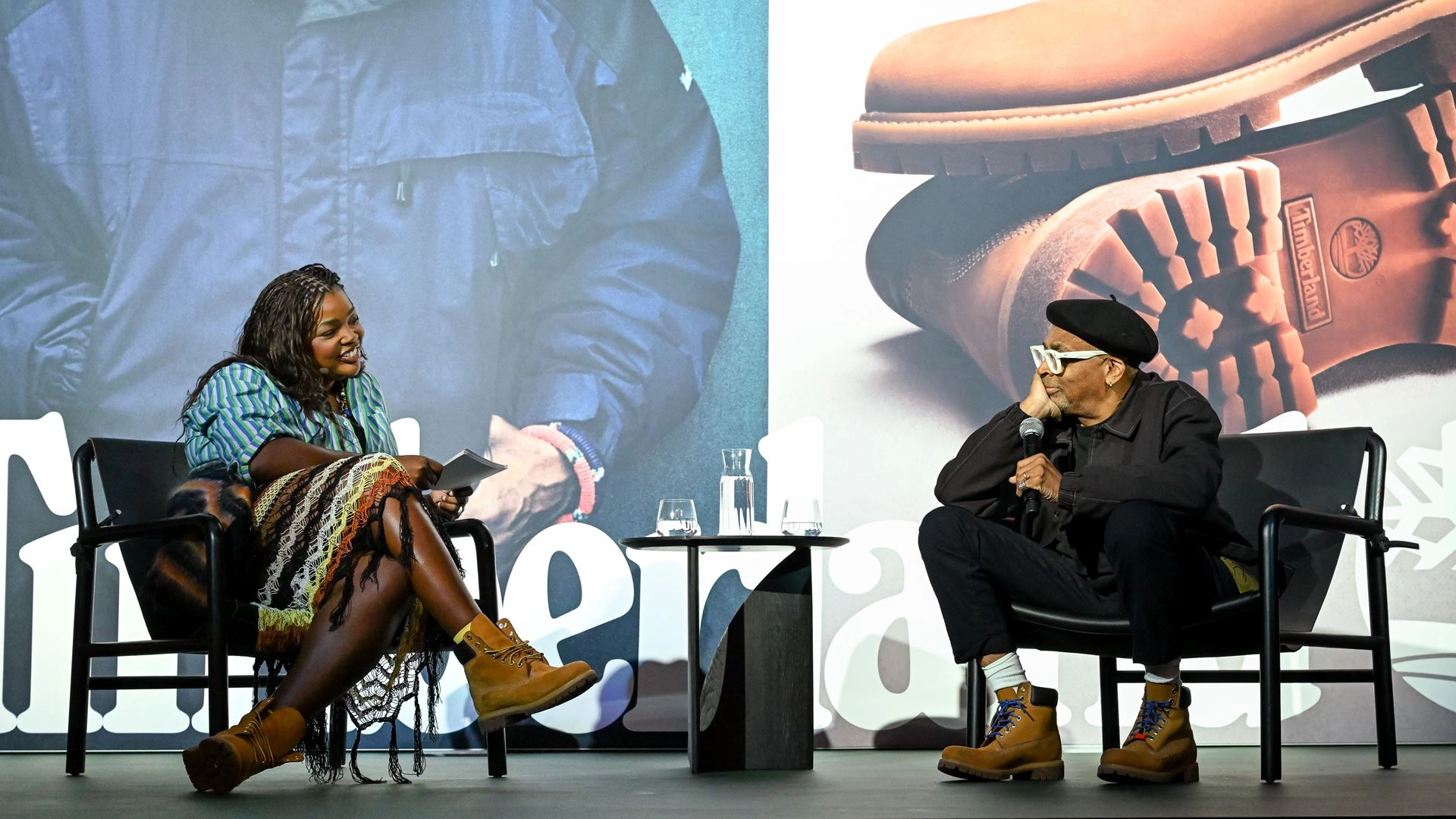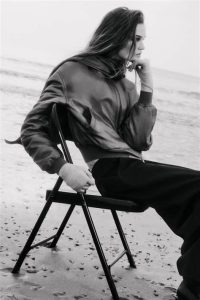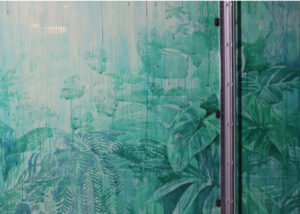From Stand-In to Centerpiece
When Lady Gaga last stood on the Coachella stage in 2017, she did so under unique pressure—stepping in for Beyoncé at the eleventh hour. While that performance was energetic, it lacked the hallmarks of a fully realized Gaga production. Fast forward to 2025, and the story couldn’t be more different.
Gaga returned to Indio not as a substitute, but as a headlining force in her own right, bringing with her a high-concept production drenched in surreal visuals, dramatic silhouettes, and a sound that married pop maximalism with electronic transgression.
For the tens of thousands of fans gathered beneath the desert sky, this was not merely a performance. It was a reassertion of Lady Gaga’s place in pop’s avant-garde—a reminder that she thrives not just in hits and headlines, but in spaces where music, fashion, and futurism collide.
The Stage as Cathedral
The set opened with an orchestral prelude that felt closer to a Kubrick film than a music festival, as an enormous curtain unfurled to reveal a multi-tiered, cyber-baroque stage design resembling a cross between a gothic cathedral and a Blade Runner set. Gaga emerged slowly in silhouette—encased in a metallic armor gown crafted by her longtime collaborator Casey Cadwallader for Mugler—her voice echoing with digital reverb as she sang the opening lines of “911.”
Flanked by dancers in chromed bodysuits and using smoke vents, pyrotechnics, and cinematic camera projections, the production turned Coachella’s main stage into a hallucinogenic opera house. Each song became its own visual act. “Stupid Love” was delivered amid floating iridescent drones; “Rain on Me” included a water curtain falling from the lighting rig.
Her team clearly embraced Gaga’s strengths as a performance artist. This wasn’t just a concert—it was installation theater masquerading as a pop set.
The Gesaffelstein Collaboration: A Cinematic Detonation
The set reached an unexpected climax midway through, when Gaga—drenched in silver strobe light and now dressed in an asymmetrical latex silhouette with jet-black thigh-high boots—addressed the crowd:
“Coachella, I brought a dark angel with me tonight. Please welcome… Gesaffelstein.”
The appearance of Gesaffelstein, the enigmatic French techno producer known for his minimalist sound and monolithic stage presence, sent a wave of disbelief and elation through the crowd. Known for collaborations with The Weeknd and his brooding 2013 debut Aleph, Gesaffelstein has rarely performed alongside pop artists, and almost never live with them.
Together, the pair launched into “Killah,” an unreleased track that had previously only been teased online. A gritty industrial-funk hybrid with relentless bass, jagged synth textures, and Gaga’s vocals processed to haunting extremes, “Killah” played like Grace Jones by way of Berghain—a track that felt completely out of place at a major American festival, and yet utterly right.
“Abracadabra (Gesaffelstein Remix)” – Pop Disassembled
Immediately following “Killah,” Gesaffelstein’s remix of “Abracadabra” was debuted—a track from Gaga’s Chromatica Rebirth deluxe EP, now reimagined as a shadowy club monster. The original’s euphoric trance melodies were buried under layers of dissonance and syncopated rhythm, while Gaga’s vocals were pitch-shifted, chopped, and glitched to resemble incantations rather than lyrics.
The remix’s drop arrived like a black hole opening mid-air: not with volume, but with subsonic frequency shifts that physically rattled the crowd. The pairing of Gaga’s theatrical instincts with Gesaffelstein’s mechanical rigor created something rare in pop today—genuine unpredictability.
A Fashion Statement in Motion
Throughout the hour-and-a-half set, Gaga cycled through six distinct looks, all built on the same themes: deconstruction, armor, and ascension. Standout ensembles included:
- A red feathered latex cocoon by Schiaparelli that enveloped her as she sang “Bad Romance” a cappella
- A 3D-printed skeletal bodysuit designed by Iris van Herpen for “Replay”
- A transparent cloak embedded with LED threads for “Alice,” giving the illusion of glitching into invisibility
It wasn’t just high fashion for fashion’s sake—it was narrative wear. The transformation of Gaga’s silhouette across the set mirrored the music’s own evolution—from accessible pop into darker, more esoteric realms. It was fashion deployed as visual language.
From Pop Stardom to Sonic Provocation
Gaga’s trajectory has never followed a straight line, and her Coachella set reflected that complexity. She isn’t just a pop star chasing the next hit. She’s an artist with a vast repertoire of pop, jazz, rock, techno, and theater—and this set embraced all of it.
The first third of her performance was a celebration of her most recognizable anthems, performed with orchestral flair and sweeping pageantry. But by the time Gesaffelstein entered, the second act became more confrontational—less about pleasure, more about power.
Her delivery of “Venus” was abstract and spoken-word; “Dance in the Dark” became an elegy with ambient synths replacing the original beat. In a particularly vulnerable moment, Gaga spoke directly to the audience:
“I’ve spent years asking what kind of artist I’m allowed to be. Tonight, I don’t need permission.”
Fan Reception and Critical Response
Social media exploded in the wake of the performance. Within minutes, hashtags like #KillahLive, #GagaXGesaffelstein, and #GagaCoachella2025 trended globally. Many fans noted that this was her boldest artistic pivot since the Artpop era, though one now delivered with restraint, maturity, and command.
Critics were similarly moved. Pitchfork described the show as “a reclamation of the intersection between rave culture and pop mythology,” while The Guardian called it “a study in aesthetic risk-taking—and proof Gaga remains one of pop’s last true visionaries.”
Perhaps the most apt response came from Rolling Stone, which wrote:
“This wasn’t Gaga rebranding. It was Gaga reminding the world that she was never brandable in the first place.”
A Catalyst for the Next Phase?
The surprise collaboration with Gesaffelstein may point toward a larger evolution in Gaga’s career. While her past albums have ranged from the disco-infused Chromatica to the jazz standards of Love for Sale, this current phase suggests an increasing lean into avant-electronic territory.
There are whispers in industry circles that her next full-length album—tentatively titled Mechanica—will be produced entirely in collaboration with industrial and techno producers, continuing the themes explored at Coachella. If true, Killah and the Abracadabra remix are just the opening salvos in what may be her most daring record yet.
Impression
Lady Gaga’s Coachella 2025 set wasn’t just a return—it was a resurrection and reinvention. It fused the camp of her early days with the technical precision of her recent work. It embraced the crowd while defying their expectations. Most of all, it gave us a version of Gaga who no longer feels bound by the industry’s need for coherence.
The inclusion of Gesaffelstein—a producer defined by mystique and control—only amplified the stakes. Together, they built a sonic cathedral in the desert, one where light and shadow could coexist, and where pop could finally surrender to the unknown.
No comments yet.


